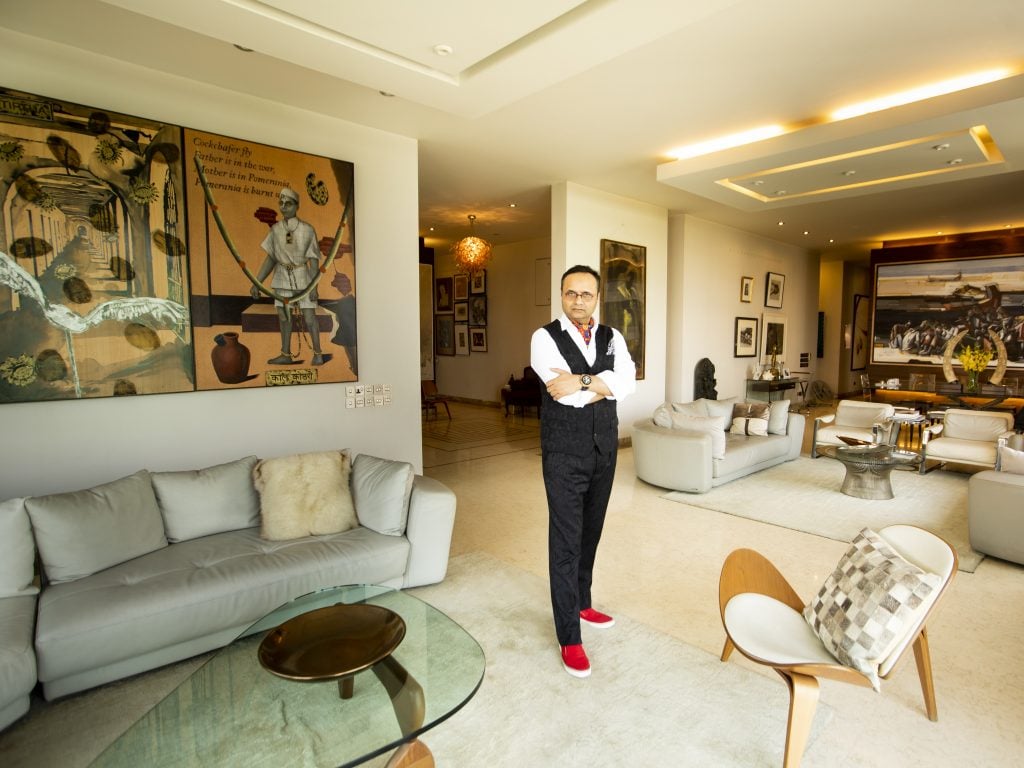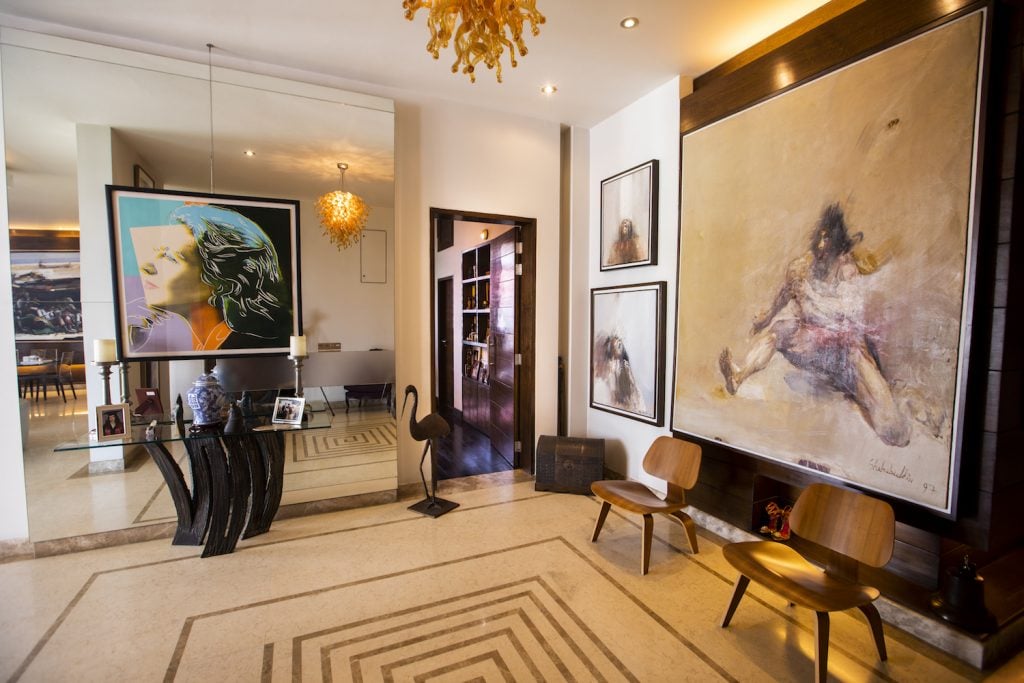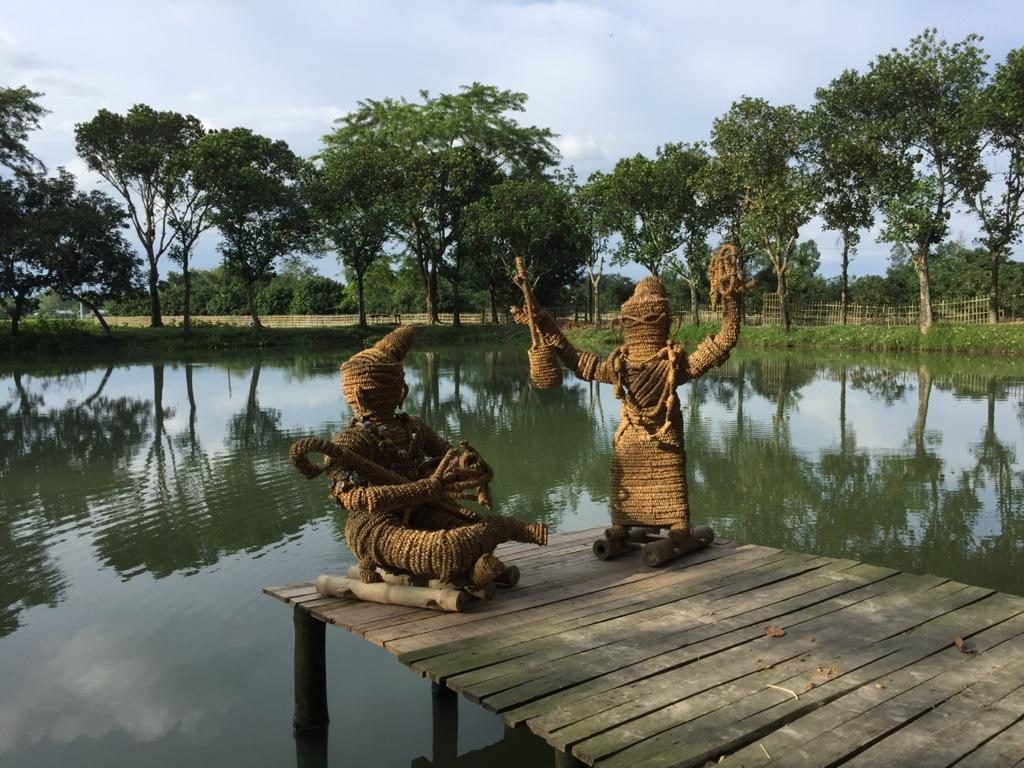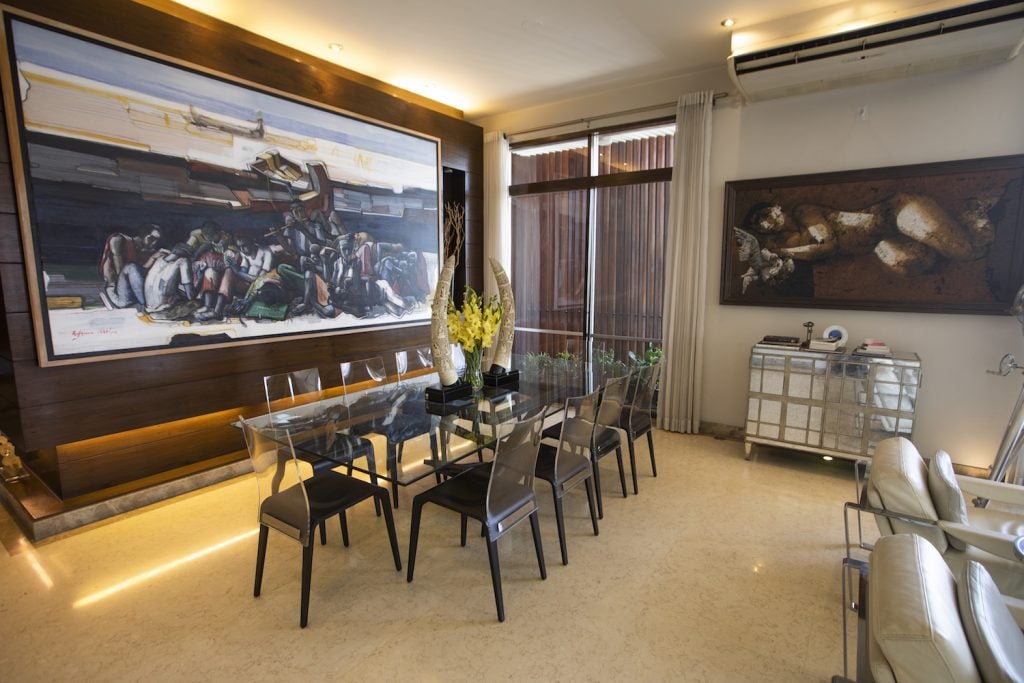People
What I Buy & Why: Bangladeshi Collector Durjoy Rahman on Why He Loves Impractical Art and How He’s Helping Local Creatives
The art collector and textile businessman also wishes he bought a Banksy when he had the chance.

The art collector and textile businessman also wishes he bought a Banksy when he had the chance.

Artnet News

In a year marked by slowdown, art collector Durjoy Rahman has been busier than ever.
An entrepreneur who runs the Bangladeshi garment and textile-sourcing business Winner Creations Ltd., Rahman has been actively supporting art from the region through the crisis. He founded the Durjoy Bangladesh Foundation, based in Dhaka and Berlin, two years ago to support art from South Asia.
Since the lockdown hit, the foundation established two dovetailing initiatives to help local artists stay afloat. One is “Bhumi,” a collaboration with the Gidree Bawlee Foundation of Arts that aims to support rural creative communities that make art, crafts, and even, in some cases, land art. Another program, called “Future of Hope,” asked nine artists to create work in response to current global challenges.
Rahman’s personal art collection, which he started in the 1990s, echoes this interest in both the global South and the Western cannon. His 1,000-plus collection includes British stars David Hockney and Lucien Freud, as well as such Indian and South Asian masters as Rafiqun Nabi and Safiuddin Ahmed.
We took a peek at Rahman’s resplendent collection inside his Dhaka home.

Andy Warhol’s Ingrid Bergman (1983); Shahbuddin Ahmed’s Jump (1997). Courtesy of Durjoy Bangladesh Foundation.
What was your first purchase (and how much did you pay for it)?
It was almost 25 years ago. I was looking at a few pieces from different artists, but the first one I collected is a work from Bangladeshi Modernist artist Rafiqun Nabi, a famous cartoonist and a visual artist. Now, I have more than 70 works by him. This work is titled Open Door (1989) and is a great example of his pioneering woodcut technique. Since this first purchase, I have always sought to collect and support Bangladeshi artists, a passion that also drives the foundation’s initiatives.
What was your most recent purchase?
A digital print on aluminum titled Merlyn by the Venetian artist Andrea Morucchio. This is the second work of his in my collection and I was pleased to have him participate in DBF’s first Majhi Residency in Venice last year. He has been active in raising awareness about the dangerous effects of mass tourism in Venice and he has been working on a project, “Venezia Anno Zero,” that documents the serenity and quietness of the city during lockdown.
As a collector, I have been considering how the foundation and I can do more to support artists and art institutions around the world during this challenging period. In particular, we have been proud to partner with the Gidree Bawlee Foundation of Art on the Bhumi initiative, which is currently supporting 60 traditional craftsmen and their families who are working with the artist Kamruzzaman Shadhin to create works in handloom fabric, bamboo, harvest waste, and land art.
Last month, we also announced our latest project, Future of Hope, which will commission new works from nine indigenous and diaspora Bangladeshi artists currently working in isolation and lockdown to offer inspiration and hope. These will be shown in an online exhibition next month.

Straw works created by local craftsmen for ‘Bhumi’ — Collaboration between Durjoy Bangladesh Foundation and Gidree Bawlee Foundation of Arts (August 2020).
Which works or artists are you hoping to add to your collection this year?
I have my eye on the multidisciplinary Bangladeshi artist Dilara Begum Jolly as well as the prolific artist and cartoonist Shishir Bhattacharjee, known as the leader of the avant-garde group “Shomoy” during the 1980s. He has been a major influence on a new generation of politically motivated Bangladeshi artists. He was also recently featured at the Palais de Tokyo in Hugo Vitrani’s exhibition “City Prince/sses.“

Rafiqun Nabi’s Fisherman at Rest (2012); Right: Jamil Naqsh, Lady with a Pigeon(2004). Courtesy of Durjoy Bangladesh Foundation.
What is the most expensive work of art that you own?
After I buy an artwork, I conveniently forget the price. For me, it is more important to remember the stories of each work and artist.
Where do you buy art most frequently?
I typically see and buy art during my frequent travels around the world, visiting both galleries and fairs. I’ve been visiting Art Basel in Basel and Hong Kong for many years, as well as Art Dubai and the India Art Fair. The Durjoy Bangladesh Foundation also has an office in Berlin and I’ve picked up many pieces, from contemporary works to antiques, from the galleries there.
What work do you have hanging above your sofa?
A diptych by the Indian artist Atul Dodiya titled Kiefer’s Cell (1999) is prominently placed in my living room. It is an important work that combines painting with assemblage.
What is the most impractical work of art you own?
Impracticality is not a word in the dictionary concerning my art collection. As a foundation, we also aim to place some of the larger installations and sculptures in institutions, such as Mithu Sen’s Museum of Unbelongings at Kunstmuseum Wolfsburg, so that the international public can enjoy them.
What work do you wish you had bought when you had the chance?
I missed an opportunity to acquire a work by Banksy but continue to enjoy and follow his very humorous and clever work.
If you could steal one work of art without getting caught, what would it be?
I am always amazed by the entire collection of New York’s Museum of Modern Art, in particular Andy Warhol’s iconic Campbell’s Soup Cans. I have long been drawn to printmaking and patterns, in part due to my business in the textile industry, and have one of Warhol’s signature portraits of Ingrid Bergman as one of the earliest works in my collection.